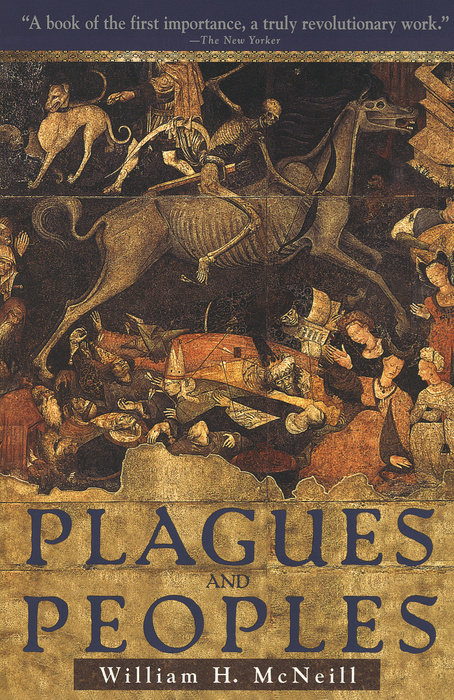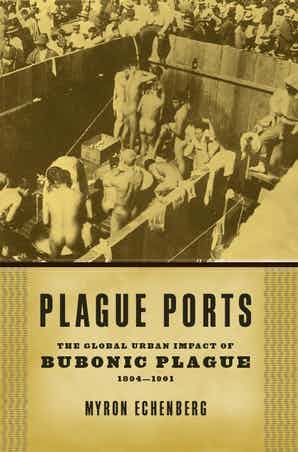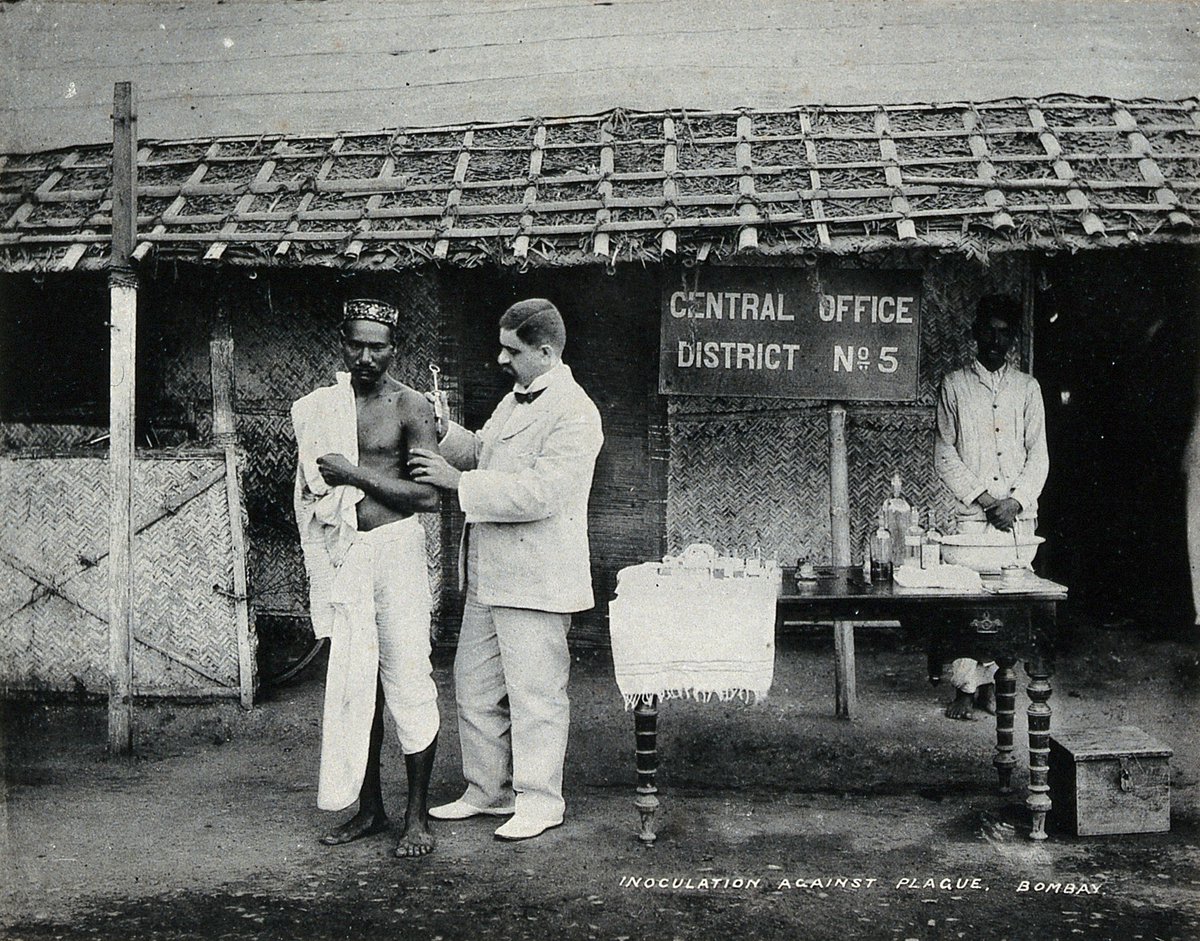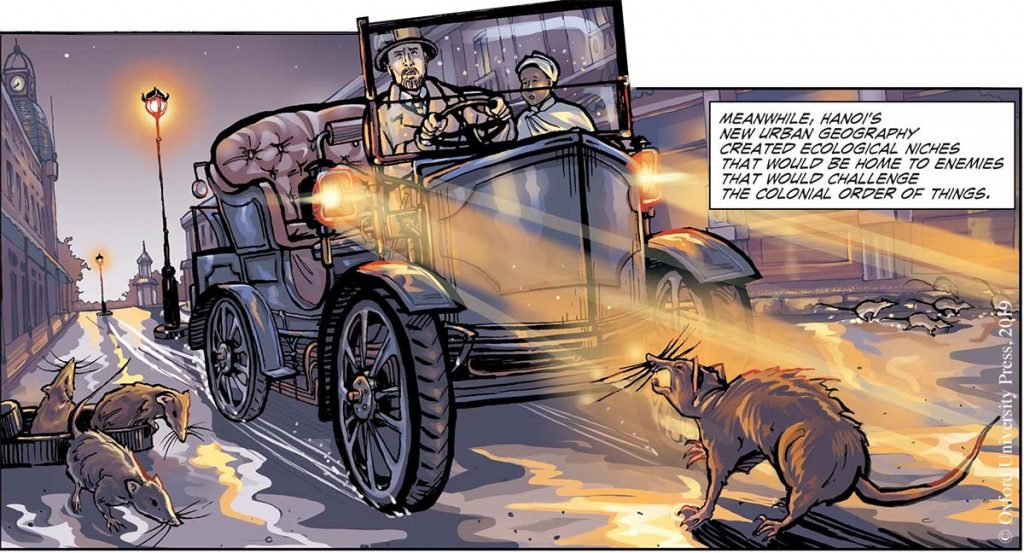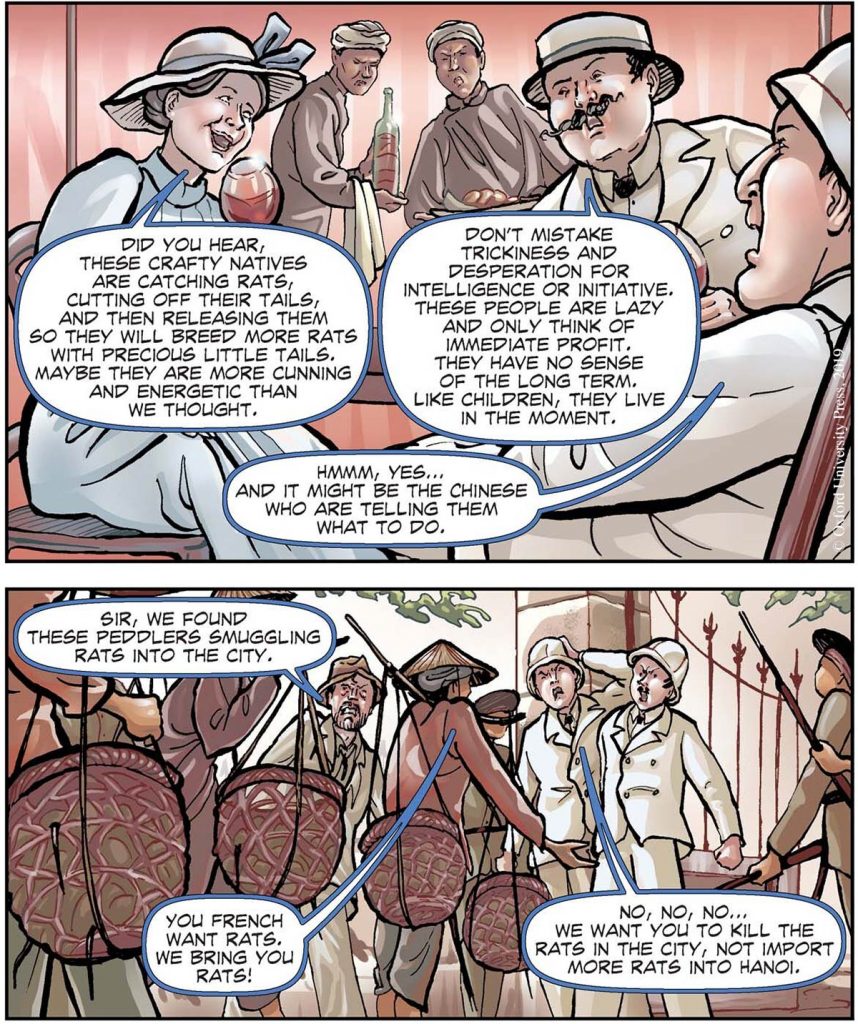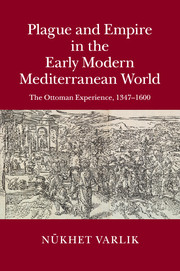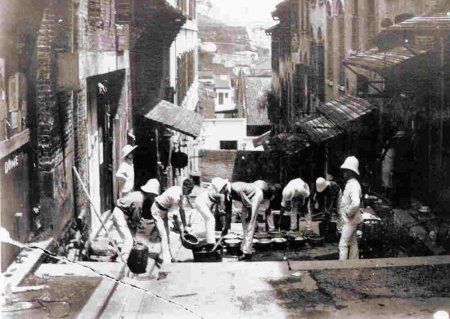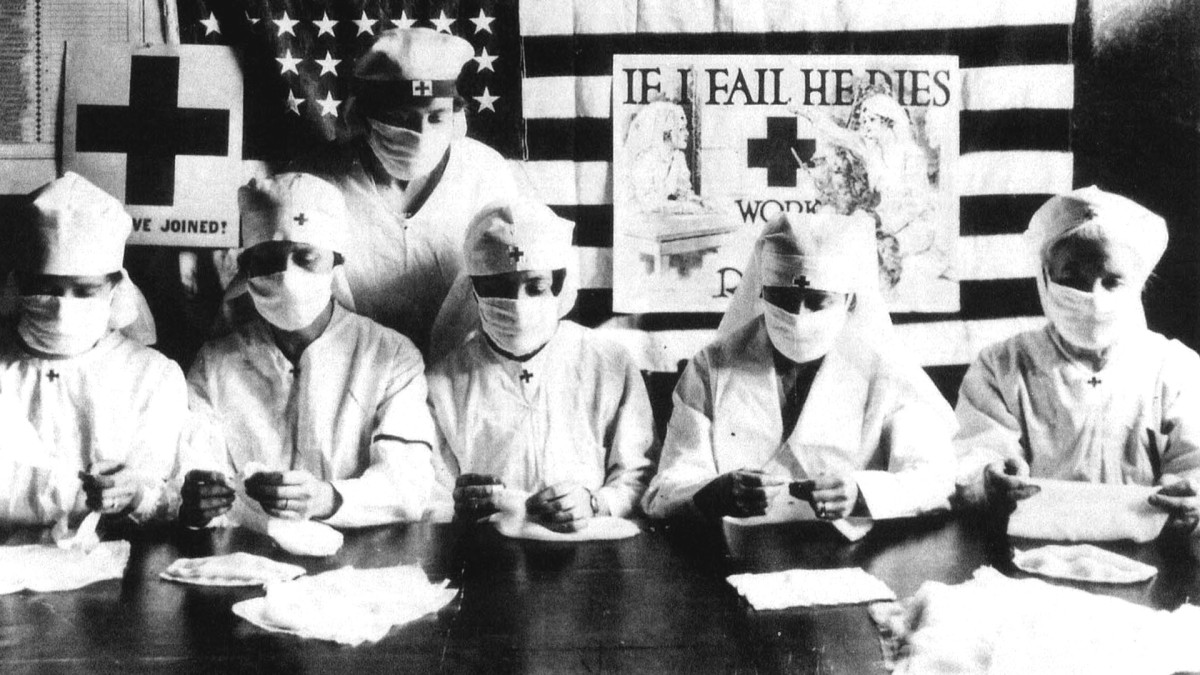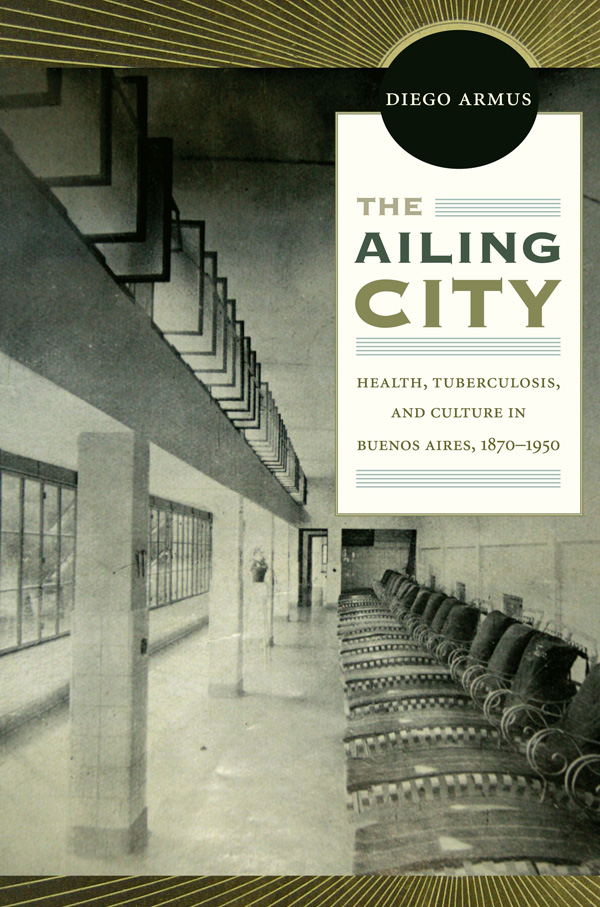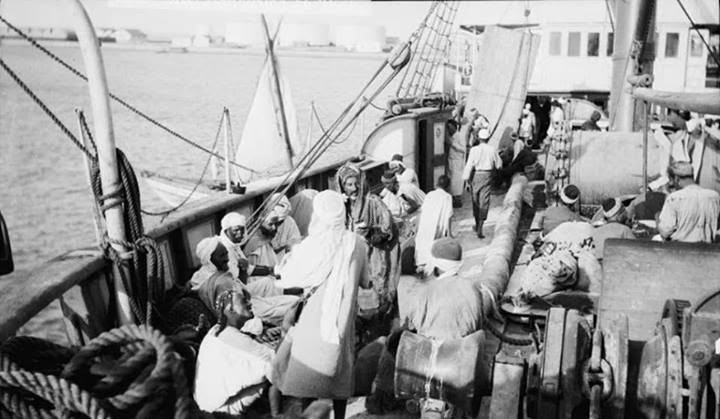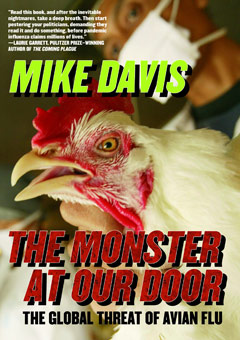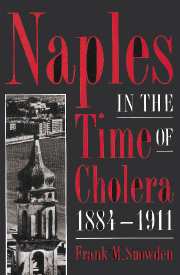Thanks to the fabulous #twitterstorians contributions in the last few days, we are starting a syllabus on global urban history and epidemics. We will be featuring one book/article every day for 14 days (or more?)...we welcome your thoughts and contributions! #guhpsyllabus
Day 1: "Plagues and Peoples" by William McNeill (1976).
From the impact of the Mongol empire on shifting disease balances, to the ecological impact of medical science since 1700...(1/2)
From the impact of the Mongol empire on shifting disease balances, to the ecological impact of medical science since 1700...(1/2)
...McNeill& #39;s sprawling book offers a radical new interpretation of world history as seen through the extraordinary impact -- political, demographic, ecological, and psychological -- of disease on cultures. (2/2)
Day 2: "Plague Ports: The Global Urban Impact of Bubonic Plague, 1894-1901" by Myron Echenberg (2007).
A century ago, the third bubonic plague swept the globe, taking more than 15 million lives. This book tells the story of ten cities that were ravaged by the epidemic: (1/3)
A century ago, the third bubonic plague swept the globe, taking more than 15 million lives. This book tells the story of ten cities that were ravaged by the epidemic: (1/3)
Hong Kong, Bombay, Sidney, Honolulu, San Francisco, Buenos Aires, Rio de Janeiro, Alexandria, Cape Town, and Oporto.
Echenberg examines plague& #39;s impact in these cities, especially on the citizenry, many of whom were recent migrants crammed into grim living spaces. (2/3)
Echenberg examines plague& #39;s impact in these cities, especially on the citizenry, many of whom were recent migrants crammed into grim living spaces. (2/3)
How did different cultures seek to cope with the challenge of deadly epidemic disease? The forces of globalization and industrialization, Echenberg argues, had so increased the transmission of microorganisms that infectious disease pandemics were likely, if not inevitable. (3/3)
Day 3: "& #39;An infection of locality& #39;. Plague, pythogenesis and the poor in Bombay, c. 1896-1905" by Prashant Kidambi (Urban History, 2004)
In September 1896, a virulent plague epidemic broke out in the colonial port city of Bombay. (1/3)
In September 1896, a virulent plague epidemic broke out in the colonial port city of Bombay. (1/3)
Central to existing interpretations of the epidemic has been the pervasive assumption that colonial policies aimed at suppressing the disease were principally informed by ‘contagionist’ etiological doctrine. (2/3)
However, this article argues that ‘localist’ etiological theories continued to exercise a critical influence over colonial policies. It thus highlights the explicit class bias that informed the colonial state& #39;s anti-plague offensive, directed at the urban poor. (3/3)
Day 4: "The Great Hanoi Rat Hunt: Empire, Disease, and Modernity in French Colonial Vietnam" by Michael G. Vann and Liz Clarke (2018).
Part of the "Graphic Histories" series, this book offers a case study in the history of imperialism. (1/4)
#guhpsyllabus
Part of the "Graphic Histories" series, this book offers a case study in the history of imperialism. (1/4)
#guhpsyllabus
This book examines the contradictions unique to the French Third Republic& #39;s colonial "civilizing mission," the development of Vietnamese resistance to French rule, and the history of disease. (2/4)
#guhpsyllabus
#guhpsyllabus
Featuring forty-nine primary sources--many available in English for the first time--and three full-color maps, it illustrates the ironic and tragic ways in which modernization projects can have unintended consequences. (3/4)
#guhpsyllabus
#guhpsyllabus
Here is author Michael G. Vann discussing the book (4/4):
https://youtu.be/Px-c059VGcI ">https://youtu.be/Px-c059VG...
#guhpsyllabus
https://youtu.be/Px-c059VGcI ">https://youtu.be/Px-c059VG...
#guhpsyllabus
Day 5: "Plague and Empire in the Early Modern Mediterranean World: The Ottoman Experience, 1347–1600" by Nükhet Varlik (2015).
The first systematic study of the Ottoman experience of plague during the Black Death pandemic and the centuries that followed, (1/3)
#guhpsyllabus
The first systematic study of the Ottoman experience of plague during the Black Death pandemic and the centuries that followed, (1/3)
#guhpsyllabus
This book uses a wealth of archival and narrative sources, including medical treatises, hagiographies and travellers& #39; accounts, to demonstrate how plague interacted with the environmental, social, and political structures of the Ottoman Empire. (2/3)
#guhpsyllabus
#guhpsyllabus
Nükhet Varlik argues that the empire& #39;s growth transformed the epidemiological patterns of plague by bringing diverse ecological zones into interaction and by intensifying the mobilities of exchange among both human and non-human agents. (3/3)
#guhpsyllabus
#guhpsyllabus
Day 6: "Critical Mass: Colonial Crowds and Contagious Panics in 1890s Hong Kong and Bombay" by Robert Peckham, in "Anxieties, Fear and Panic in Colonial Settings" (2016) edited by Harald Fischer-Tiné.
#guhpsyllabus
#guhpsyllabus
Day 7: "& #39;Destroyer and Teacher& #39;: Managing the Masses During the 1918–1919 Influenza Pandemic" by Nancy Tomes (Public Health Reports, 2010).
The Spanish flu arrived in the US when mass transportation and mass consumption had expanded the spread of diseases. (1/3)
#guhpsyllabus
The Spanish flu arrived in the US when mass transportation and mass consumption had expanded the spread of diseases. (1/3)
#guhpsyllabus
Public health authorities tried to implement social-distancing measures at an unprecedented level of intensity. Recent historical work suggests that the early and sustained imposition of social-distancing measures significantly reduced mortality rates. (2/3)
#guhpsyllabus
#guhpsyllabus
This finding makes it all the more important to understand the sources of resistance to such measures. To that end, this historical analysis revisits the lessons learned during the 1918–19 pandemic and reflects on their relevance for the present. (3/3)
#guhpsyllabus
#guhpsyllabus
Day 8: "The Ailing City. Health, Tuberculosis, and Culture in Buenos Aires, 1870–1950" by Diego Armus (2011).
For decades, tuberculosis in Buenos Aires was more than a dangerous bacillus. It was also an anxious state of mind. (1/3)
#guhpsyllabus
For decades, tuberculosis in Buenos Aires was more than a dangerous bacillus. It was also an anxious state of mind. (1/3)
#guhpsyllabus
In The Ailing City, the historian Diego Armus explores the metaphors, state policies, and experiences associated with tuberculosis in Buenos Aires between 1870 and 1950. (2/3)
#guhpsyllabus
#guhpsyllabus
Against the background of the global history of tuberculosis, Armus discusses the state’s intrusion into private lives and the ways that the diseased accommodated and resisted attempts to reform and control their morality, sociability, and sexuality. (3/3)
#guhpsyllabus
#guhpsyllabus
Day 9: "Empire and the Hajj: Pilgrims, Plagues, and Pan-Islam Under British Surveillance, 1865–1908" by Michael Christopher Low (International Journal of Middle East Studies, 2008). (1/3)
#guhpsyllabus
#guhpsyllabus
From the mid-19th to the early 20th centuries, the forces unleashed by the age of European imperialism and its rapid encroachment on dār al-Islām increasingly brought the hajj under the scrutiny and regulation of non-Muslim powers. (2/3)
#guhpsyllabus
#guhpsyllabus
With the growth of maritime traffic came a rise in the oceangoing pilgrim traffic from and through British India. The hajj soon came to be recognized as the primary conduit for the globalization of epidemic diseases, such as cholera and plague. (3/3)
#guhpsyllabus
#guhpsyllabus
Day 10: "The Monster At Our Door: The Global Threat of Avian Flu" by Mike Davis (2005).
In this urgent and extraordinarily frightening book, Mike Davis reconstructs the scientific and political history of a viral apocalypse in the making. (1/3)
#guhpsyllabus
In this urgent and extraordinarily frightening book, Mike Davis reconstructs the scientific and political history of a viral apocalypse in the making. (1/3)
#guhpsyllabus
In the book, Mike Davis exposes the central roles of agribusiness and the fast-food industries, abetted by corrupt governments, in creating the ecological conditions for the emergence of the H5N1. (2/3)
#guhpsyllabus
#guhpsyllabus
“We are talking at least seven million deaths, but maybe more—10 million, 20 million, and the worst case, 100 million.” —Shigeru Omi, regional director, Western Pacific Office of the World Health Organization, November 2004. (3/3)
#guhpsyllabus
#guhpsyllabus
Day 11: "Naples in the Time of Cholera, 1884–1911" by Frank M. Swoden (1995).
This is a medical and social history of Italy& #39;s largest city during the cholera epidemics of 1884 and 1910–11.
#guhpsyllabus
This is a medical and social history of Italy& #39;s largest city during the cholera epidemics of 1884 and 1910–11.
#guhpsyllabus
The book sets Naples in a comparative international framework. The disease is also related to larger historical issues, such as the nature of liberal statecraft, the & #39;Southern Question& #39;, mass emigration, organised crime, urban renewal, and the medical profession.
#guhpsyllabus
#guhpsyllabus
Day 12: "Medical Knowledge and Urban Planning in Tropical Africa" by Philip Curtin (AHR, 1985).
Europeans colonised most of tropical Africa between 1880 and the First World War. This was also a period of rapid advance in tropical medicine. (1/3)
#guhpsyllabus
Europeans colonised most of tropical Africa between 1880 and the First World War. This was also a period of rapid advance in tropical medicine. (1/3)
#guhpsyllabus
New currents in European thought about urban planning flourished in these same years—the key period for city planning in Africa, when colonial capitals were either founded or redesigned. (2/3)
#guhpsyllabus
#guhpsyllabus
Although its influence was strong, Curtin shows that medical thought was neither alone nor dominant in shaping the cities of tropical Africa. It indeed drew on precedents of the Indian cantonment system, the funduq, or the South African mining compound. (3/3)
#guhpsyllabus
#guhpsyllabus

 Read on Twitter
Read on Twitter